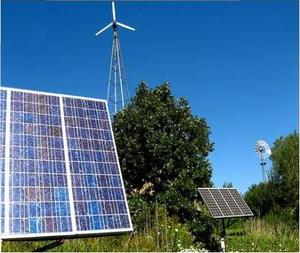EnergyCalculating the energy required to store wind and solar power on the grid
Renewable energy holds the promise of reducing carbon dioxide emissions. There are times, however, when solar and wind farms generate more electricity than is needed by consumers. Storing that surplus energy in batteries for later use seems like an obvious solution, but a new study from Stanford University suggests that might not always be the case.

Power production is one thing, storage is quire another // Source: akhbaralarab.net
Renewable energy holds the promise of reducing carbon dioxide emissions. There are times, however, when solar and wind farms generate more electricity than is needed by consumers. Storing that surplus energy in batteries for later use seems like an obvious solution, but a new study from Stanford University suggests that might not always be the case.
“We looked at batteries and other promising technologies for storing solar and wind energy on the electrical grid,” said Charles Barnhart, the lead author of the study and a postdoctoral scholar at Stanford’s Global Climate and Energy Project (GCEP).
“Our primary goal was to calculate their overall energetic cost — that is, the total amount of fuel and electricity required to build and operate these storage technologies. We found that when you factor in the energetic costs, grid-scale batteries make sense for storing surplus solar energy, but not for wind.”
A Stanford University release reports that the study, which is supported by GCEP, is published in the online edition of the journal Energy and Environmental Science.
Climate change and renewable energy
Most electricity in the United States is generated at power plants that run on coal and natural gas — fossil fuels that contribute significantly to global warming by emitting large amounts of carbon dioxide. Solar and wind power are emissions-free and renewable, but depend on sunlight or wind to operate.
“For the grid to function efficiently, power supply needs to match power demand at all times, but with renewables, that’s not always the case,” Barnhart said. “For example, wind farms sometimes produce too much electricity at night when demand is low. That excess energy has to be stored or used elsewhere. Otherwise it will be lost. However, the U.S. grid has very limited storage capacity.”
A wide variety of technologies are being developed to address the lack of grid-scale storage. The release notes that the Stanford team looked at several emerging technologies, including five battery types — lead-acid, lithium-ion, sodium-sulfur, vanadium-redox, and zinc-bromine.
In a previous study, Barnhart calculated the energetic cost of building and maintaining each of the five battery systems for grid-scale storage. Lead-acid batteries had the highest energetic cost, lithium-ion the lowest, he found.
